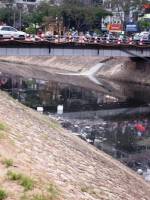
As economies grow, their capital stock also grows. Capital stock is made up of physical, human, natural, and social capital. Natural capital in turn is composed of renewable and non-renewable forms. The former includes the present value of services provided by forests, land, water, and air, while the latter comprises sub-soil assets such as minerals, oil, and gas.
For growth to be green, the value of the environment should not decline, and one measure of that is for renewable natural capital not to fall over time. A study conducted to compare the GDP growth of 34 countries in Asia-Pacific from 1995 to 2018 with the change in their renewable natural capital, as measured by the World Bank, found that 24 of the countries had experienced green growth. The countries with the greatest per cent growth in natural capital were Uzbekistan, Cambodia, Solomon Islands, Myanmar, India, and Vietnam.
The measure of natural capital, however, does not include services provided by the atmosphere against global warming. To account for that, the value of greenhouse gas (GHG) emissions must be debited to the change in the natural capital stock.
This value is uncertain, and estimates depend on many factors, including the discount rate. When an adjustment was made to the natural capital for the GHGs, fewer countries had experienced green growth. With the value of GHGs calculated using a 5 per cent discount rate, 11 of the 34 experienced green growth. With a 2.5 per cent discount rate, which gives a higher value to GHGs, only three of the 34 countries had experienced green growth.
Comparing changes in natural capital and GDP can also inform us about the “greenness” of growth. Arguably, the greater the increase in natural capital per unit increase in GDP, the greener the growth.
Effective green growth hinges not only on enhancing natural capital but on reducing emissions through efficient, cost-effective strategies. By this indicator, and accounting for GHGs, the best-performing countries in the region have been the Solomon Islands, Bhutan, Laos, Cambodia, Papua New Guinea, and Vietnam.
This indicator of green growth complements others, such as those from the Global Green Growth Institute and the Global Sustainable Competitiveness Index.
These indices are a composite of many sub-indicators at a point in time. However, they do not track growth in the way this current study does. Comparing their values with the greenness measure, a positive but weak correlation was found. The three can be considered to provide complementary information on green growth.
To explain the variation in greenness across the countries analysed, an econometric analysis was carried out. Significant factors were the initial value of natural capital relative to GDP (which indicates a convergence in greenness over time); a qualitative indicator of voice and accountability of civil society, which negatively impacts greenness of growth; and a qualitative indicator of rule of law, which has a positive effect on greenness of growth.
One message that emerges from the study is that greenness needs efficient growth relative to GHG emissions, as well as increasing the value of other forms of natural capital. Phasing out of high emissions sources such as coal and replacing them with renewable energy will help reduce emissions per unit GDP, but the switch should be cost-effective to also raise aggregate output.
Increasing efficiency in the use of fossil energy will also raise the greenness of growth. Other policies that promote green growth include reducing pressure on natural capital exploitation by raising agricultural productivity, and raising the returns on forest conservation through carbon and biodiversity credits.
There is also a role for the private sector to promote greenness of growth. Its role will be critical in the transition to a low-carbon future. But this will need the right incentives, such as subsidies for clean energy with a potential low cost, as well as disincentives in the form of a carbon tax or similar instrument to discourage the use of fossil fuels.
There is a growing but still relatively limited role for the private sector in carbon sequestration and biodiversity conservation through markets for carbon and biodiversity credits. The role of the private sector can be further enhanced by de-risking investments in climate mitigation and adaptation.
While many countries have made strides in increasing their renewable natural capital, the inclusion of GHG emissions significantly alters the landscape. Effective green growth hinges not only on enhancing natural capital, but also on reducing emissions through efficient and cost-effective strategies.
Anil Markandya




